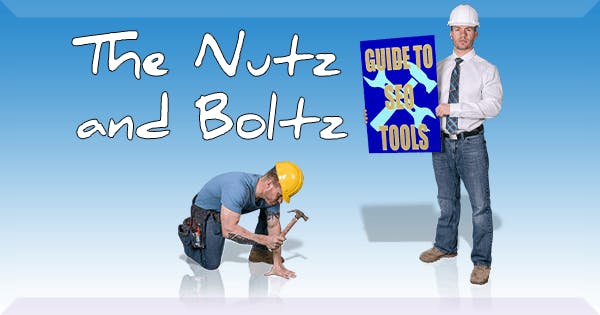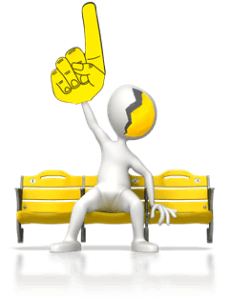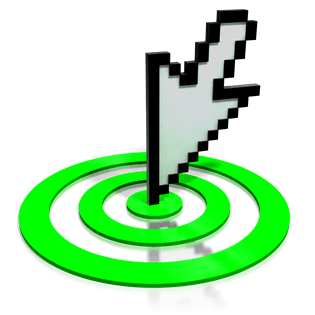
The Insider’s Guide to SEO Tools
08-Jun-2015
Eva Haugen
Getting Started with Search Engine Optimization
When you create a website for yourself or your business, it’s created for a specific reason. Possibly to display artistic talents, blog about life or improve the market visibility of a business, and/or sell products or services.
In any situation, the website is there for people to see. If search engine optimization tools aren’t used, that website is unlikely to attract visitors.
Search engine optimization tools take advantage of marketing changes that see a shift from a one-way statement of fact, “We provide the best…,” to a two-way dialogue, “We know we have the best…, ask us why.” The query prompts the engagement with the customer.
How to use search engines is easily found with a simple search about SEO on one of the major search engines. This search will return countless results about how to get started optimizing your website.
The results returned will contain a combination of well-informed amateurs, bloggers, and professionals willing to share free advice, and businesses selling their expertise. The information is there on the web and it is constantly evolving.
Google even offers a blog to share it’s latest best use suggestions.
A Guide to SEO tools
Search engine optimization increases market and online visibility by balancing the focus between two areas: on-page SEO and off-page SEO. On-page SEO focuses on what the website needs to make it better and more visible to spiders (the robots that crawl the web looking for new content) through the content on the page.
Off Page SEO is concerned with the impact of websites and social sites referring to your website. It considers such things as their authority, and relevance to your subject matter.
On-Page Search Engine Optimization
The different tools and techniques for improving on-page Search Engine Optimization comprise the following:
“Full of Life Content”
 For successful optimization of a website, it needs fresh, dynamic and original content. Regular updating of content increases the number of times or visits the spiders make to the website. The more times a spider references a website, the more data it has to influence search returns.
For successful optimization of a website, it needs fresh, dynamic and original content. Regular updating of content increases the number of times or visits the spiders make to the website. The more times a spider references a website, the more data it has to influence search returns.
One of the reasons why blogs do very well in search returns is that they have regular updates. One way for a business to maintain dynamic content is for the CEO founder or even a lower-level staff to blog on relevant topics.
Self-hosted, blogging platforms such as WordPress do many of the on-page functions automatically. Virtually any web host worth a dime for business offers a way to install WordPress on your domain.
Ease of Access and Site structure
Ease of access to the site and navigation between pages provides the most essential tool for engaging customers. Any confusion as how to get from one page to the next almost guarantees that users will lose interest, leave the website and never come back.
Site structure and map are also important to access by search engines. As previously mentioned, allowing ease of access for the spiders allows for more data collection and the higher ranking on the search-engine results pages (SERPs).
Your digital site-map will satisfy the spiders and get more pages on your website properly indexed for search.
Keywords’ Location, density and relevance
If your business wants its website to rank high on the search engines for specific search terms, you need to ensure you do keyword research. Keywords and long-tail key phrases are the basis of SEO, because the search engines still need text-to-link connections to search terms.
The placement of keywords is significant to the relevancy of search results and achieving ranking. As a rule, keyword density is not really significant. Use of the proper keyword in a natural use along with related phrases that support the sound and tone of the article or post works best.
You can, if you wish, use a rule of thumb of 3 to 6 uses (depending on article length) of each particular keyword. This is enough to increase visibility, but what really matters is the overall readability of the content.
Hyperlinks within the content with keyword references should be used – but should be varied.
WARNING: do not saturate your content with links because this is also not natural (like using the same keyword too many times) and will result in the search engines penalizing your website for trying to manipulate the search.
Internal Linkage
Relevant links between compatible articles and blog posts increase the probability of spiders finding all your related pages and your visitors staying engaged on your website.
However, it is again important to understand that search engines will penalize the use of too many links between pages – particularly if the links are evaluated as ‘irrelevant’ or unconnected.
Product Advocacy
 If a customer commented on a product (constructively if criticized), offered an opinion on a blog post, or praised the work of an artist, the website will gain reputation. Websites with user comments receive more visitors and users that appreciate a website are more likely to share information and advocate their products.
If a customer commented on a product (constructively if criticized), offered an opinion on a blog post, or praised the work of an artist, the website will gain reputation. Websites with user comments receive more visitors and users that appreciate a website are more likely to share information and advocate their products.
Getting customers to comment can be a challenge, so using controversial suggestions and opinions can be one way to start them responding. You can also simply ask for comments as one of your calls to action.
Off-Page Search Engine Optimization
In addition to the on-page SEO techniques, websites also need links to and from other important sites on the internet. There is no point being a spider in the center with no way to navigate out.
Linking out and linking in
Assuming your business or you as an individual has built a website by paying attention to on-page search engine optimization techniques, including internal links, it is time to ensure you have links to and from the website and linking it to other web users. On-page efforts alone simply won’t make you the most relevant site to the search engines.
The inbound links from external websites and social content will drive up your SERP rank and page reputation. However, linking outward to authority sites or articles that enhance the information already available on site will create a greater user experience and be rewarded by higher search results.
Social Media
Engaging social media is necessary because it increases breadth and scope of who you reach in the world with a few clicks. A social media profile allows access to groups and people who would not otherwise look for or find your website.
It’s an excellent means of maintaining contact with a customer base, as long as the profile stays active. It keeps sociable users and customers coming back to your site to have questions answered, to receive updates, to find promotions, and to simply receive information.
Mutual Appreciation
This is a way to generate partnerships with other websites and businesses. Mutual appreciation of products and services goes a long way to creating a solid web of referral.
Sharing articles from other relevant websites and blogs, posting glowing reviews of another company’s supporting product will prompt reciprocal action, generating more links inward to the website.
Pay-Per-Click and other ad campaigns
 Pay-pay-click (PPC) is a search engine optimization based ad technique. While a business cannot pay search engines to place their website at the top of an unrelated search, they can pay for an ad when the keyword data and other SEO options are relevant to the search.
Pay-pay-click (PPC) is a search engine optimization based ad technique. While a business cannot pay search engines to place their website at the top of an unrelated search, they can pay for an ad when the keyword data and other SEO options are relevant to the search.
It is definitely a popular and effective method of advertising, but not a good plan if the SEO of the website is not in top shape.
Classified Listings
Classified listings are not always appropriate if a website is for an online business or service, but if a website has a localized physical presence it can be a huge benefit to increasing sales, both offline and online.
Including a web address with a classified listing such as Yelp or Yellow Pages, and other business directories for consumers and B2B increases the inward links to the website.
A company offering optimization services can cover almost all of the areas of on and off page search engine optimization. If a business or individual is unable to do everything required to improve online visibility, he can hire a professional. He can even externally optimize the content or source content writers to keep the website.
Using the Correct SEO Tools
The implementation of SEO tools and techniques is important. Your business needs to know the correct tools to use for their website because not every tool is appropriate for every website. You must monitor the traffic flow to your website.
Remember, search engines continuously change how they “spider” to increase their ability to return appropriate search results to their users.
Obviously as search engines change, SEO tools change. Monitoring traffic flow will allow you to keep track of when the search engine optimization strategies no longer work and if you need to use different tools to maintain online visibility.
Googling (or using your search engine of choice) for “SEO Tools” or “free search engine optimization tools” will return lots of monitoring, content writing and website building tools, with search engine optimization as the driving force. These can really help if your ad budget is low for the time being.
Leading SEO companies will monitor traffic flow, but many lack a strategy to improve traffic flow. Some companies remain stuck using older marketing and SEO techniques. Their tools worked in the past but their techniques lost their relevancy for today. When choosing a company, be sure they really are up to date.
The tools and techniques for boosting your search results are there to use. Many are free, and most contain adequate instructions on how to put them to use. Always start using the tools that Google and Bing provide in their webmaster’s tools. Google also provides Analytics Tools. More sophisticated tools exist and typically you purchase them on a subscription basis.
However, if you seriously want SEO to work for your business getting visitors, leads and customers, without all the constant struggle, I suggest you look into hiring a professional SEO company that stays up to date with the latest premium tools and changes so you don’t need to bear the full expense.
Read more